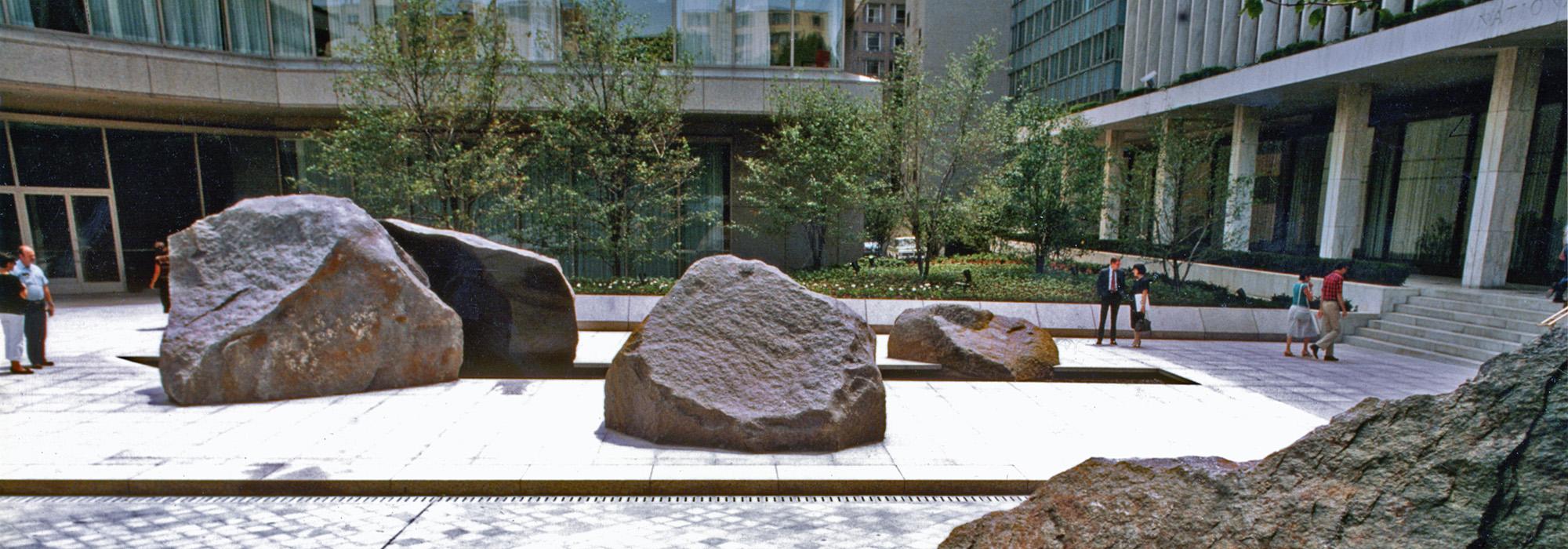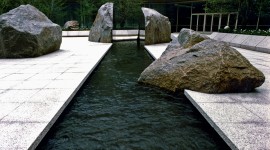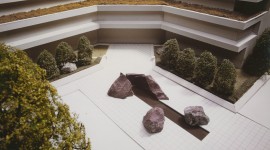TCLF Talks to Elyn Zimmerman
EDITOR’S NOTE: This conversation with celebrated artist Elyn Zimmerman was prompted by the revelation that her sculpture, MARABAR, located in the publicly accessible plaza of the National Geographic headquarters in Washington, D.C., might soon be destroyed. Zimmerman’s work has been featured in the collections of the Museum of Modern Art, the Whitney Museum of America Art, and the Los Angeles County Museum of Art, and she has been recognized with awards from the Art Commission of the City of New York, the National Endowment for the Arts, and several other organizations. MARABAR was her first large-scale stone project, with others since completed for the Institute for Advanced Studies in Princeton, New Jersey; the New Orleans Museum of Art; the U.S. State Department; and the Vancouver Art Commission. In 2016 Zimmerman, along with Tadao Ando, received the Isamu Noguchi Award.
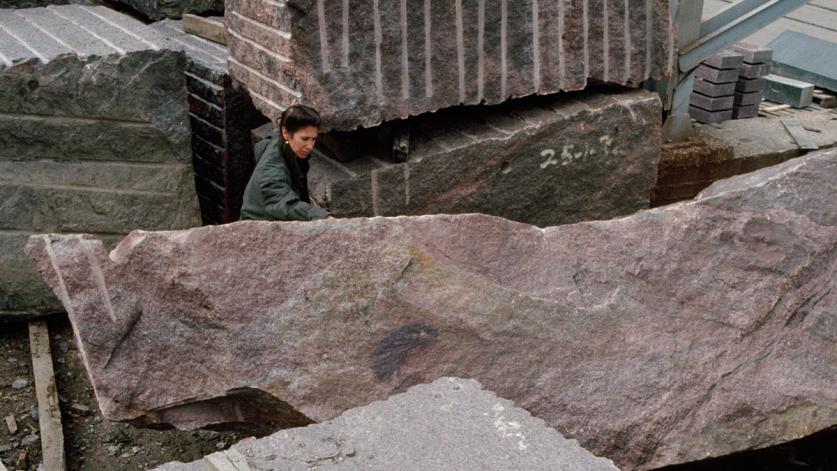
In the 1970s you traveled to India as a painter and a photographer, but you returned to the United States a sculptor. What caused that personal and professional transformation?
I spent three months in India, and one of the highlights of traveling there was to visit Ellora, an exceptional archaeological site. In approaching the site, one faces a 50-to-60-foot-tall wall of natural basalt before walking through an opening cut into its surface. All the space inside—and it’s huge—had once been solid rock. With only minimal tools, these spaces were created, beginning in the sixth century A.D. It was such an unexpected and powerful experience for me that I literally fell to my knees.
Ellora was not the only rock-cut temple or cave that I visited during that trip to India. Karla, Ajanta, and others were also amazing sites. I photographed so many places, but the experiences of the rock-cut sites made me want to work with stone—an ‘old man’s’ and an ‘old school’ material. I had never taken a sculpture class while at UCLA as an undergraduate or graduate student, and I wasn’t interested in stone carving, but rather in creating places using stone as the major material.
When I got back to Los Angeles, I went with Pamela Burton, a longtime friend, to a small stone quarry somewhere near San Bernardino. There were small pieces of broken stones… mainly tombstones and curbs… that the quarry was willing to give us to carry away. I took some to my studio and began to make models using the stone, and cut out figures for scale, and used sand from Venice beach as ground, etc. I photographed these ‘model pieces’ and used the photographs to apply to Artpark (see below) to do a commission there. Stone visually fit into the vocabulary of materials I liked to work with.
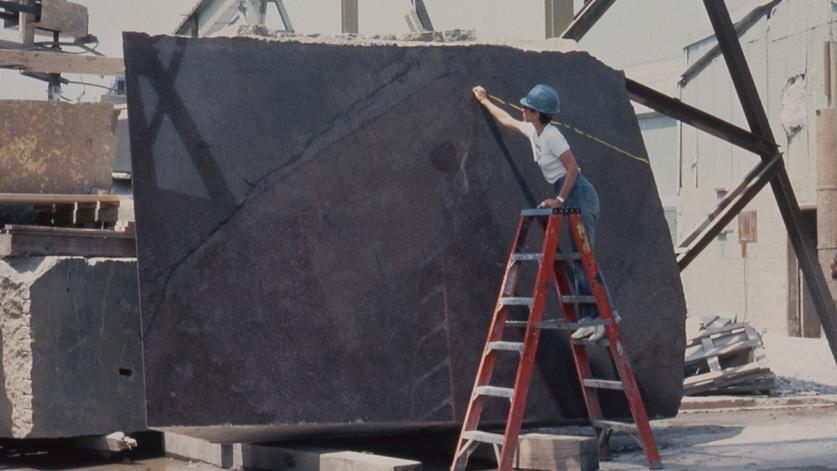
Over the years, you’ve mentioned many qualities that have drawn you to work with stone as a medium—its stillness, permanence, and resonance. Very often your sculptures incorporate water as well as stone. Why is that pairing—stone and water—so appealing to you?
It just seemed to be a natural pairing. All my life I’d seen coastlines where rock and water interacted. As a young adult, I camped all over California, and in small streams and large rivers, rocks and water were together. The only place that rocks were not with water was in the desert regions. I had made indoor installation pieces for a few years using glass and mirrors for their reflective qualities. Once I started making outdoor installations and permanent projects, the reflective quality of the water’s surface became an important element in the works. Also, the ‘mute’ quality of stone works so well as a contrast to the ‘musical’ quality of water. Stone could be polished to be reflective—like water—but is still very different when it comes to our perception of the reflected images.
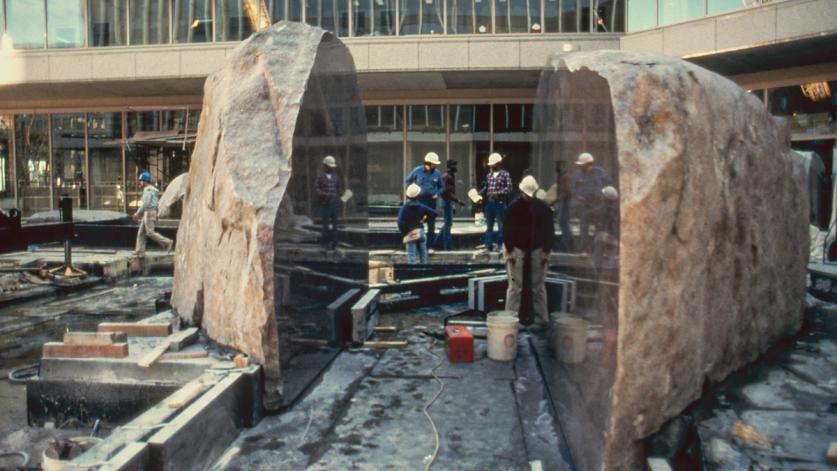
To a much greater degree than photography or painting, your large-scale sculptures invite interaction. To what extent does that interaction affect the creative process, especially in public spaces that are often expected to be functional in some way?
Once I decided to work on large-scale public and private projects, it was a given that the creative freedom that comes with doing studio work (painting, drawing, etc.) would be changed. The large projects are by necessity collaborative endeavors that entail working with engineers and other design disciplines. These projects are often meant to provide amenities to a public space. So, as an artist, I had to adjust to working within a team and to address set practical goals. Also, by accepting public commissions, you are agreeing to create for interactivity with the public. It is not the same as working alone in a studio, but the works that are realized are on a larger scale and become part of the world in ways that gallery and museum works do not.
You were a member of the U.S. Commission of Fine Arts (CFA) from 2003 to 2008. What was it like to be in a position to review the work of other artists?
I had taught graduate school art classes since graduating myself in 1972, first at Mills College and then at Cal Arts, and when I moved to New York City in 1978, at SUNY Purchase. As an art teacher you are always critiquing artworks. I also had to appear before the CFA in 1980s for the National Geographic project that I completed a few years later. It was terrifying for me then!
When I joined the CFA, I found it to be a wonderful group of people. The discussions were very educational for me, and they were always respectful and rigorous. We often made field trips to inspect sites ourselves. There were far fewer artists than architects and national parks people who appeared before the CFA.
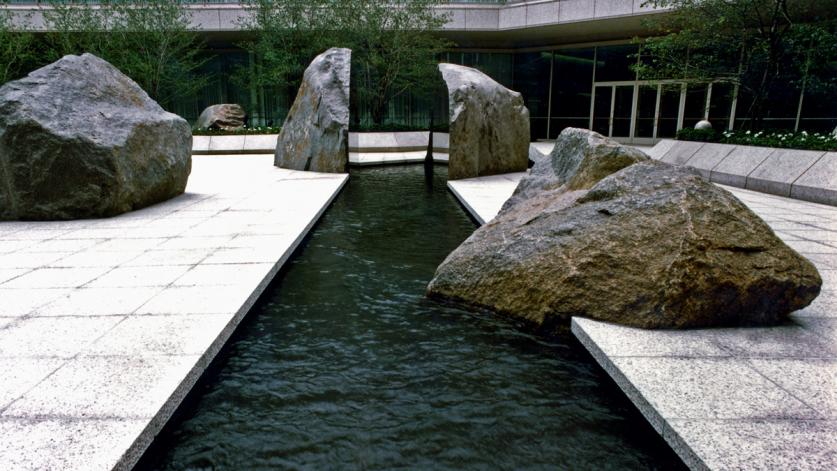
You’ve described your work Marabar, completed in 1984 at the National Geographic Headquarters in Washington, D.C., as your “big break.” How did that commission come about?
In 1977 I did a project at Artpark in Lewiston, New York, that used polished black granite: a 150-foot-long by two-foot-wide line of granite set flat into the rocky, uneven landscape of the Niagara River gorge. It looked like a channel of water, but it was 200 feet above the Niagara River. I registered slides of this project with the National Endowment of the Arts Visual Artist Registry. Someone from the Skidmore, Owings & Merrill (SOM) / National Geographic team referred to the registry looking for artists who worked outdoors with stone and water. They came up with Michael Heizer and myself. After visiting our studios in New York City, I think they asked us both to make proposals (for a minimal fee). I don’t know whether Heizer made a proposal, but I did, and David Childs of SOM liked it.
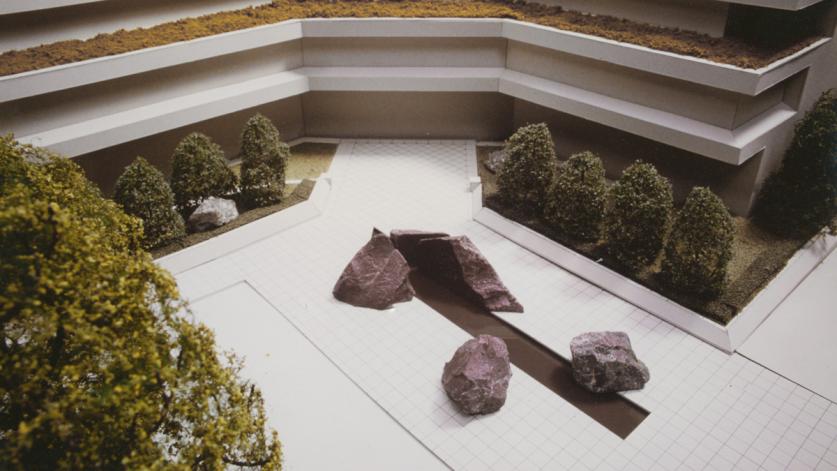
You often express appreciation for David Childs, of Skidmore, Owings & Merrill (the firm charged with overseeing the plaza) and the role he played in the project. Can you say more about his role?
David was instrumental in preparing me for the meeting with the board of National Geographic, and he also had his office construct the model for my proposal. I went to a rock shop in New York City and selected the rocks for the model and worked with the shop owner to cut them to size and shape, as well as polish the faces that needed polishing. SOM incorporated them into the scale model they made of the plaza. (I still have the plaza portion of the original model).
The board of National Geographic was quite conservative, and most of them probably had never been in a room with an artist, especially a young female artist. David advised me on what to wear (a business suit, which I had to borrow) and what points to make briefly to keep the board interested. This was the first commission I had, and, unlike young architects, I had no prior experience making presentations—art school doesn’t prepare you for this kind of thing.
David didn’t make any changes to my original proposal. He helped get the engineering right for supporting a very heavy project, and he hired the fountain consultant. And Jim Urban, the project’s landscape architect, was wonderful, too. I was a novice, and he treated me with respect.
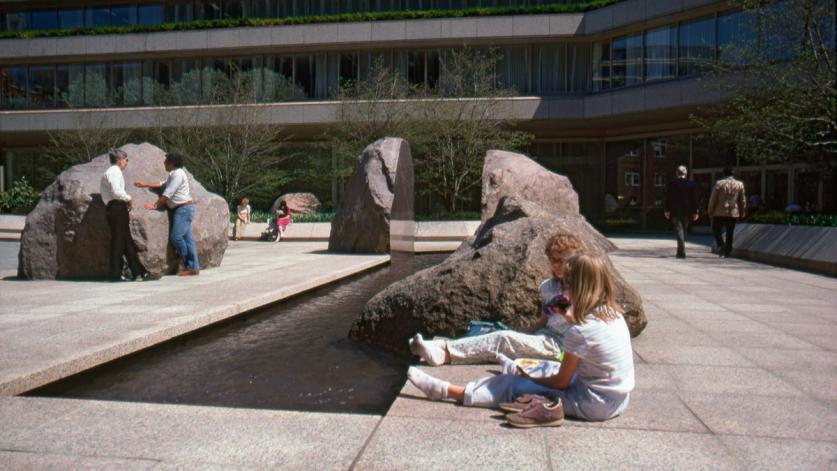
You’ve described the National Geographic work as “one of the nicest projects I ever had a chance to work on.” In working closely for the first time with any number of male-dominated professions, did you experience gender bias?
To find the right color granite, I was sent to the showroom of the Building Stone Institute in New York City. I chose what was called Carnelian from the Cold Spring Granite Company. At the time, this was the largest granite company in the United States, and it was headquartered in Cold Spring, Minnesota, about a 2.5-hour drive northwest of Minneapolis. Cold Spring was family-owned, and aside from a huge chicken farm facility, it was the only business in the area. It was the type of town where work closed down for the opening of hunting season.
I went there with someone from the SOM office to meet with the staff. Needless to say, showing up with SOM to work on the National Geographic headquarters got everyone there excited. But they just did not expect me. The person who handled special projects was an older gent. He was brought in to meet us and was told that I was the artist he would be working with on the project. He promptly unhooked his tool belt, threw it on the ground, and stomped away! Over time, he and I did work together, and I am proud to say that he came to the dedication in Washington, D.C., and that we worked together for another twenty years until he passed away. But that first meeting took my breath away.
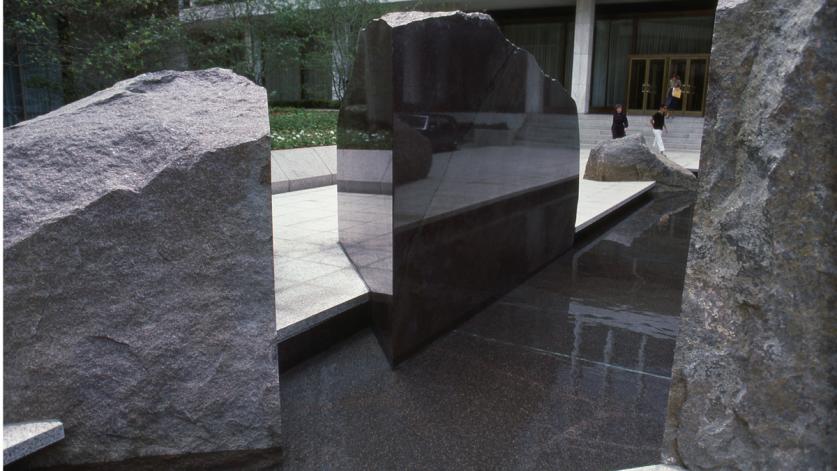
Were you given creative freedom on the National Geographic project, and were there any guidelines about what National Geographic wanted to achieve with this commission?
There were no set guidelines, except that they expected the plaza to be made of natural materials. There was never any pressure to do figurative work or to “make things smaller.” National Geographic had a lot of resources, and they were willing to use them to support the project.
Was it your understanding that the work would be permanent, and, if so, what led you to believe that?
While there’s no guarantee that buildings or public art pieces will be permanent, I suppose I thought that MARABAR was going to be there for a long time, if only because of the weight of the stones and the trouble that it took to install them. But also, the fact that the project was well-liked and very well-received gave me hope that it would continue to be appreciated.



